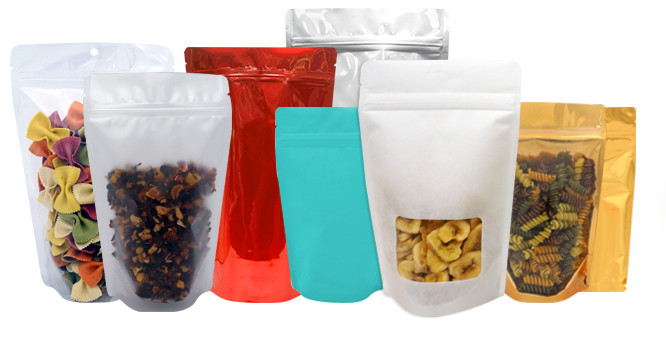Food packaging is an integral aspect of the modern food industry, serving several critical functions beyond just containment. It ensures the safety and quality of the product, extends shelf life, provides branding and marketing opportunities, and makes consumer convenience a priority. In the ever-evolving landscape of food packaging, stand-up pouches have emerged as a game-changer. These flexible, innovative packaging solutions have transformed the industry by offering several advantages that cater to both manufacturers and consumers. This article explores the importance of mylar bags and stand-up pouches in food packaging and how they have become a preferred choice for many in the industry.
The Evolution of Food Packaging
Food packaging has come a long way since its inception. From traditional methods like leaves and animal skins to cans, glass bottles, and plastic containers, the industry has witnessed constant innovation and adaptation. The development of materials and designs in food packaging is not only for aesthetics but also for functional purposes.
Traditional packaging methods were bulky and often lacked convenience, leading to a significant waste of resources. As consumers became more health-conscious and environmentally aware, there was a growing demand for packaging that was not only functional but also sustainable. Stand-up pouches have emerged as an answer to these demands.
The Importance of Stand-Up Pouches
Versatility:
Stand-up pouches are incredibly versatile and can be used for a wide range of food products, from snacks to pet food, liquids to dry goods. They come in various sizes and shapes, making them suitable for virtually any product category. Their flexibility also allows for customization in terms of materials, closure mechanisms, and printing, making them an ideal choice for brand differentiation.
Sustainability:
Sustainability is a key driver of change in the packaging industry. Stand-up pouches are generally lighter than traditional rigid packaging, which results in lower transportation costs and reduced carbon emissions. Additionally, many stand-up pouches are designed to be recyclable and reduce material waste, aligning with the goals of environmentally conscious consumers and brands.
Extended Shelf Life:
The ability to protect the contents from oxygen, moisture, and light makes stand-up pouches an excellent choice for preserving product freshness. This extended shelf life not only reduces food waste but also enhances the reputation of brands that use this type of packaging.
Convenience:
Stand-up pouches are known for their user-friendly design. The inclusion of features like zip locks, spouts, and tear notches makes them easy to open, reseal, and dispense. This convenience appeals to busy consumers who value easy access to their favorite products.
Brand Visibility and Marketing:
The large surface area of stand-up pouches provides ample space for branding, product information, and eye-catching graphics. This is a crucial aspect of marketing and helps products stand out on store shelves. The creative possibilities with stand-up pouches allow for compelling storytelling and connection with consumers.
Cost-Effectiveness:
Stand-up pouches are often more cost-effective than rigid packaging. The lightweight nature of these pouches reduces shipping and storage costs. Additionally, their efficient use of materials means less waste, leading to cost savings.
Product Protection:
Stand-up pouches offer superior protection to products. They provide a barrier against external elements, preventing contamination and spoilage. This is crucial for items that are sensitive to air, moisture, or UV radiation.
Consumer Trends:
As consumer preferences evolve, the food industry must adapt to meet their demands. Stand-up pouches align with the growing desire for convenience, sustainability, and visually appealing packaging. They are well-suited to accommodate changing dietary habits and the rise of on-the-go lifestyles.
Examples of Successful Implementation
Numerous food brands have recognized the importance of stand-up pouches in food packaging and have experienced significant benefits from their adoption. For instance, baby food manufacturers have transitioned to stand-up pouches due to their resealable spouts and excellent product protection. These pouches are convenient for parents and ensure the freshness and safety of the food.
Snack brands have also embraced stand-up pouches as a way to connect with consumers. The resealable nature of these pouches keeps snacks fresh, while the eye-catching design and ample space for branding enable companies to tell their unique stories and create a strong visual identity.
The beverage industry has not been left behind. Energy drink brands, for instance, have adopted stand-up pouches with spouts that make it easier for consumers to enjoy their drinks on the go. The lightweight nature of these pouches reduces shipping costs for the company and contributes to a smaller carbon footprint.
Stand-up pouches have also been a boon to pet food manufacturers. These pouches offer convenience to pet owners who can easily serve their pets and reseal the pouch for later use, maintaining the product’s freshness.
Challenges and Considerations
While stand-up pouches offer numerous benefits, they are not without their challenges. The multi-layered structure of some pouches can make recycling more complex, though advancements are being made in this area. Additionally, some consumers may be resistant to change and have a preference for traditional packaging.



